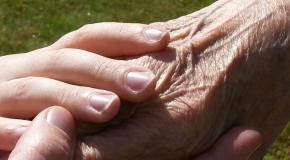Not yet ready for the challenge
In many ways, Asia-Pacific societies are falling short in addressing the region’s current osteoporosis burden (discussed in an earlier article). They are certainly far from prepared for the likely growth in this health burden.
Two key deficiencies illustrate the distance yet to travel. One is the lack of awareness of the disease, both among both physicians and the general public, an issue which the EIU has addressed in its previous studies on osteoporosis in the region.1 “A lot of people still consider osteoporosis to be a normal part of ageing and simply don’t understand that we are looking at a chronic disease of epidemic dimensions,” says Markus Seibel, founder and chair of Australia’s SOS Fracture Alliance. “To change that is not easy.”
Amid such widespread misunderstanding, individuals at risk do not seek diagnosis. Meanwhile, physicians – particularly general practitioners – are too busy to identify patients. Paul Mitchell – an executive committee member of the Fragility Fracture
Network – explains that “We haven’t achieved the level of traction that we should. Primary care is overwhelmed by numerous other things, and we need to provide much greater clarity on what we’re asking them to focus on.”
Another sign of insufficient attention to osteoporosis within health systems is the problematically low provision of Fracture Liaison Service (FLS) in many Asia-Pacific countries.2 These services integrate different elements of osteoporosis diagnosis and
management around patients who have experienced a likely fragility fracture. Although they can be organised in several different ways, overall FLSs have proven themselves to be cost-effective in reducing secondary fractures,3 which are often more serious than initial ones.
Too many countries, however, have at best highly limited FLS provision. The challenge is predictably greatest in low-resource health systems. India, for example, has centres in only a few cities.4 China is committed to establishing FLSs under the title of “Good Bone Programs,” but there is no sign that the very low post-fracture follow up in that country is improving.5 The problem is not restricted to emerging markets. For example, South Korea’s FLS offerings also remain small.6
Other countries have seen more progress in recent years. New Zealand now has FLSs in all its District Health Boards and Taiwan and Thailand are looking to provide national coverage. Even the existence of such facilities, however, is not always sufficient on its own. Japan, for example, has any number of highlyrated FLS clinics, but these are not covered by the country’s national health insurance.7
What Dr Seibel notes of Australia is also an issue more widely: FLS services are typically based in hospitals and patients usually come to their attention only after the first serious fracture. “They are great facilities, but don’t have the capacity to look after the true number of patients at risk.” Primary care needs to become more involved as well.
Winning hearts and minds
These deficiencies do not reflect a lack of need, but one of political will. “The sad thing is, even with all these data [demonstrating the fracture burden] a lot of countries still don’t prioritise osteoporosis,” says Dato’ Dr Joon-Kiong Lee, a consultant orthopaedic surgeon and deputy medical director at Beacon Hospital in Malaysia. Dr Seibel has seen this phenomenon in his country as well. He notes that since the start of the century, Australia has had a large number of relevant publications from societies and meetings between advocates and government about osteoporosis. Although things have improved somewhat very recently, for a long time these efforts “made federal and state governments aware, but the issue seemed simply to be ignored.”
Raising the political and social profile of osteoporosis in the Asia-Pacific region will be essential in bringing about the necessary changes in attitudes and infrastructure to address the challenge. Not surprisingly, notes Dr Seibel, the rapid ageing in the area has brought about “a surge of interest” in efforts in this direction.
In the past however, Mr Mitchell notes, advocacy has had “limited impact due to a fragmented voice.” Now, he adds, “the use of alliances could help overcome this.” Certainly, a distinctive element of the new crop of organisations seeking – at the
regional and national levels – to improve the response to osteoporosis is the use of multistakeholder alliances rather than trying to create single organisations.
Regional initiatives
One important new actor in this field is the Asia Pacific Fragility Fracture Alliance (APFFA), formed in late 2018. It has seven member organisations, all of which are also societies that in turn bringing together multiple bodies: the Asian Federation of Osteoporosis Societies, the Fragility Fracture Network, the International Osteoporosis Foundation, the International Society for Clinical Densitometry, the Asia Pacific Orthopaedic Association, the Asia-Oceanian Society of Physical and Rehabilitation Medicine, and the Asia Pacific Geriatric Medicine Network.
Dr Lee is co-chair of the APFFA. He points to the potential benefits of cross-specialty collaboration in a disease that does not easily fit into the remit of one medical specialty. “We [the APFFA] are coming together to target three pillars: promoting post-fracture acute care, post-fracture management and rehabilitation and secondary fracture prevention programmes.”
Even where new single organisations are being formed, they look to benefit from as diverse a set of perspectives as possible. The Asia Pacific Consortium on Osteoporosis (APCO) was set up in 2019. It is seeking to bring together a wide, multi-disciplinary range of medical and surgical specialists from countries across the region in order to develop a framework of minimum clinical standards for people living with osteoporosis.
National alliances
Multi-national alliances, says Dr Seibel, are very good at making the necessary noise to raise the profile of osteoporosis. Ultimately, however, he adds that “every country has its own problems and health system structure.
Even the situations in Australia and New Zealand are quite different and those like Thailand and Vietnam even more so. Actual change to improve care can only be done nationally, on a state level, or even locally.”
Accordingly, national alliances devoted to bone health and fracture prevention have been appearing in different Asia-Pacific countries. In 2016, for example, Australia’s SOS Fracture Alliance was formed, bringing together several dozen medical, patient
advocacy, and carer organisations. The following year, New Zealand’s Live Stronger for Longer campaign appeared. This is a joint initiative, with leading members including the patient advocacy group Osteoporosis New Zealand, the Ministry of Health, and the government’s Accident Compensation Corporation, which provides no-fault accident insurance coverage for all New Zealanders. More recently, in 2019, the Bone Alliance Singapore brought together leading osteoporosis clinicians, healthy ageing
charities, and public policy academics to improve public understanding of the disease in that country.
More are likely to follow. The Fragility Fracture Network, on its web site, explains that it consciously seeks to act “as a global template for creating national alliances in as many countries as possible.”
As noted above, such coalitions are important in dealing with a condition that requires input from a range of medical specialties. They are also, explains Dr Seibel, “necessary to have a stronger voice.”
An important part of this strength comes from engaging organisations that are generally supportive but for which osteoporosis and fractures are not leading priorities. The SOS Fracture Alliance is a good example of how this can work. Its 38 member groups include not just many relevant clinician and medical organisations. It also brings together the national and various state chapters of the Country Women’s Association – Australia’s largest women’s organisation, which has a focus on conditions for women and children especially in semi-urban and rural areas – and the Council on the Ageing – the country’s leading advocate for the rights and interests of seniors. Overall, Dr Seibel estimates that some 3m people, more than 10% of the population, belong to one of the Alliance’s member groups.
The challenge with such a wide base, notes Dr Seibel, is to keep them engaged, active, and supportive. When they are, he adds, they can be very helpful both in awareness raising and providing support with governments.
National bodies are also important in identifying specific national needs related to osteoporosis and fractures, as well as finding ways to address them. The partners who went on to form Live Stronger for Longer, for example, played a large role in the launch of the Australia & New Zealand Hip Fracture Registry in 2016. Meanwhile, the Bone Alliance Singapore is working with one of its member bodies, the Lee Kuan Yew School of Public Policy, to investigate public attitudes toward osteoporosis and how to increase its perceived importance.
Finally, Dr Seibel recently received research funding from Australia’s National Health and Medical Research Council to study the feasibility, clinical effectiveness and cost-effectiveness of a model of care that integrates primary and secondary/tertiary care in Australia. Developed in collaboration with the Alliance and Sydney’s Sax Institute, the model places secondary fracture prevention in primary care, with only complex cases being referred to costly hospital-based Fracture Liaison Services.
By using their different strengths, these national and multi-national coalitions hold out the hope of transforming osteoporosis, and the fracture damage it causes, from a silent epidemic to a healthcare priority across Asia-Pacific. As Dr Lee puts it, “National alliances change the country; regional and global alliances change the world.”








